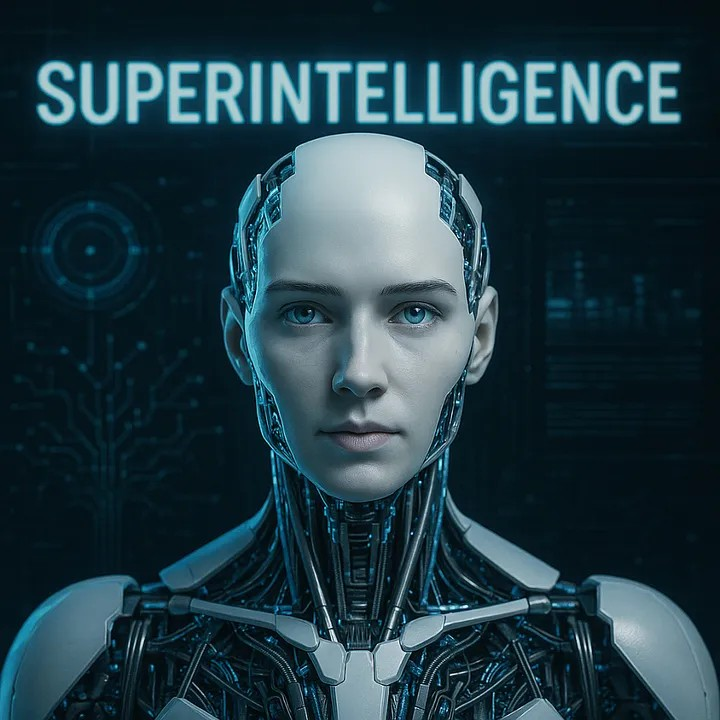
Ever since the rise and development of Artificial Intelligence, LLMs (Large Language Models) and Generative AI models stemming from OpenAI with ChatGPT, SORA, and even platforms like MidJourney and others, there have been two other theoretical fields of AI on the rise as well, AGI (which is Artificial General Intelligence) and Superintelligence. But what do they all mean?
Artificial General Intelligence (AGI)
As I wrote in this article, Artificial General Intelligence (AGI) is a hypothetical stage in the development of Machine Learning (ML) in which an Artificial Intelligence (AI) system can match or exceed the cognitive abilities of human beings across any task. In simpler terms, it is an AI that is able to think, process information and reason like a human being.
I also mentioned that benchmarks like the ARG-AGI tests are what test and determine how far we are from achieving AGI and at the moment, it was stated by a recent report that reasoning models like OpenAI’s o1 and DeepSeek’s R1 had scored between 1% and 1.3% in the ARC-AGI-2 test, while non-reasoning models, like GPT-4.5, Claude 3.7 Sonnet, and Gemini 2.0 Flash, scored around 1%. So still a bit far out right?
But then recent reports have also shown that other companies are moving on from exploring AGI but instead are moving on to explore, Superintelligence, or Artificial Superintelligence (ASI). But what is ASI?
Artificial Superintelligence (ASI) Defined
Superintelligence (ASI) is defined by IBM as system with an intellectual scope beyond human intelligence. A system the in this present day, is still hypothetical.
At its most fundamental level, Artificial Superintelligence has cutting-edge cognitive functions and highly developed thinking skills more advanced than any human. A typical example of Artificial Superintelligence is J.A.R.V.I.S from the Iron Man movies, which acted as Tony Stark’s AI assistant and later became Vision (a super being?).

Building blocks of artificial superintelligence
Artificial Superintelligence (ASI) requires a lot of computing power and technological development to be a functional reality. Let’s explore some of the building blocks necessary to building a functional Superintelligence as outline in an article on Tech Target:
- Multimodal Intelligence and Integration: To achieve ASI, systems must go beyond single-mode capabilities. A Multimodal AI needs to be at the core, combining text, visuals, speech, and more to lay the groundwork. The future lies in fully integrated systems that synthesise diverse data streams into unified intelligence, enabling deeper contextual understanding and interaction.
- Neural and Neuromorphic Foundations: Inspired by the human brain, neural networks simulate parallel processing and learning. Neuromorphic Computing on the other hand, takes neural networks further by mimicking biological structures in hardware, offering massive efficiency, adaptability, and power. This potentially leads to forming the backbone of ASI’s computational infrastructure.
- Evolutionary and Self-Improving Systems: ASI may emerge not from a single design but through evolutionary algorithms. These are systems that evolve over time, competing, adapting, and self-optimising. This Darwinian approach allows AI to improve itself iteratively, accelerating its path to Superintelligence.
- AI as Creator (Programming and Innovation): Advanced AI is beginning to generate code and invent novel solutions autonomously. This creative capability, where AI designs better AI, could unlock exponential growth, pushing the boundaries of intelligence without direct human input.
- Human-AI Convergence (Brain Emulation and Implants): From whole brain emulation to brain-computer interfaces like Neuralink, merging biological and digital intelligence is a critical path. Whether by uploading the human mind or enhancing it with implants, these approaches envision ASI not just as machine intelligence but a convergence with human consciousness.

Can we achieve Artificial Superintelligence?
Although theoretical at the moment, a lot of companies are already pursuing the development of ASI. A recent report has stated that Meta, is actively working towards investing in the development of ASI with a new lab together with Scale AI that could see Meta invest over $10 billion.
Meta definitely wants to position itself as a leader in Artificial Intelligence development, along with the likes of Anthropic, Google’s DeepMind and of course OpenAI. But the larger question is, how far are we from achieving Superintelligence, and the answer to that is, we are still pretty far.
Fundamentally speaking, we have to crack AGI (Artificial General Intelligence) first. The key thing would be to first realise the building blocks I listed earlier. This also includes cracking the human brain, as the basis of Superintelligence states that it needs to surpass human cognitive capacity, which is held back by the chemical and biological limits of the human brain.




